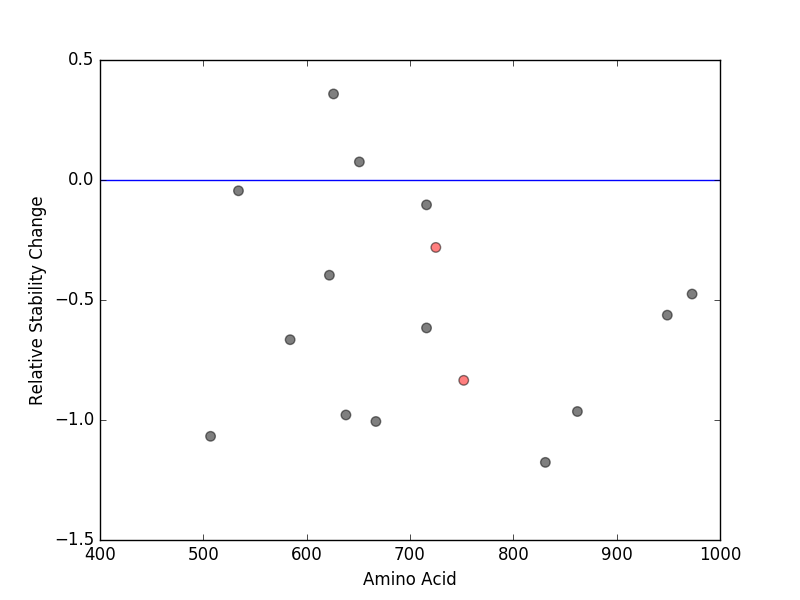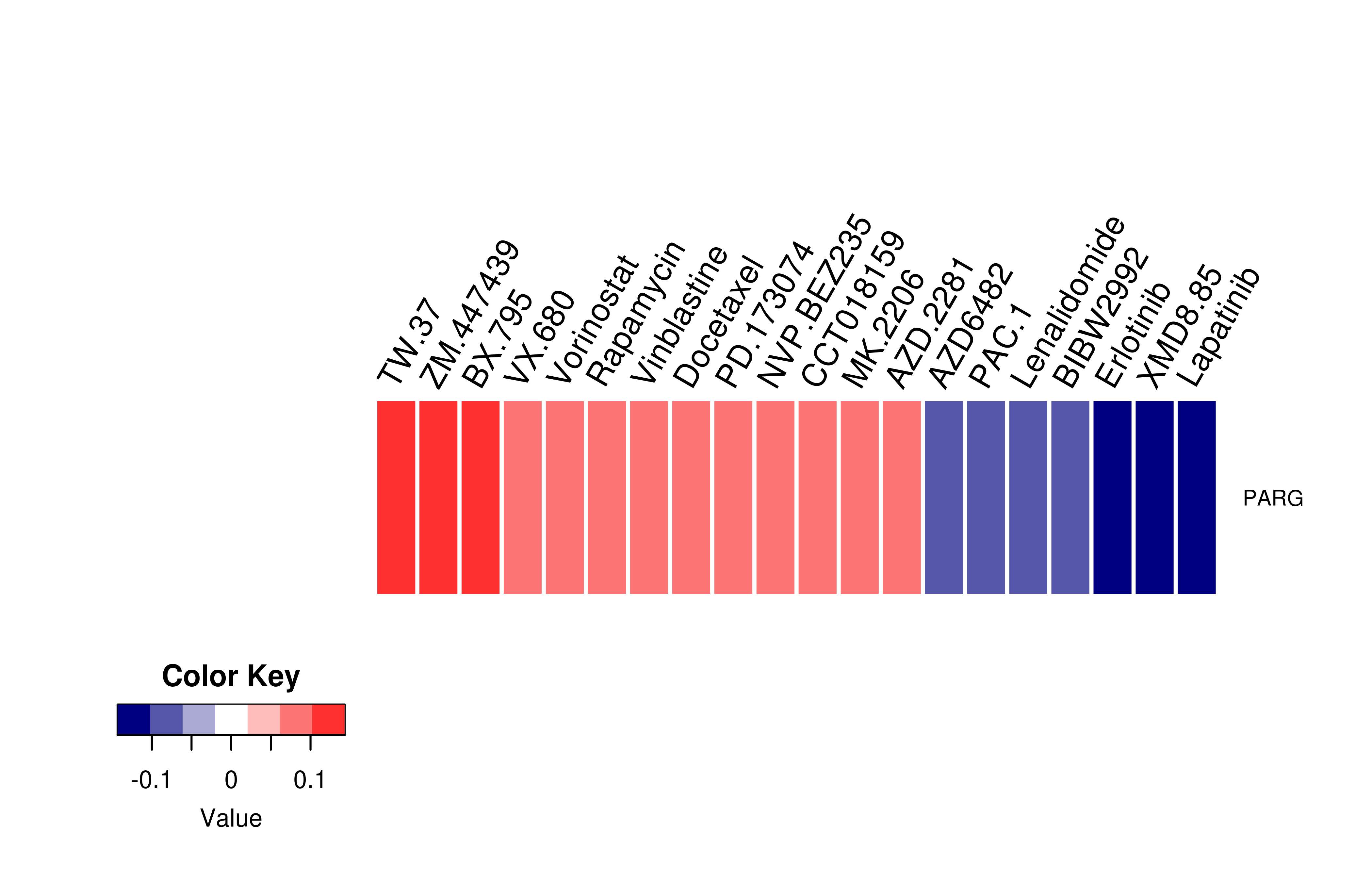| cf) Cancer type abbreviation. BLCA: Bladder urothelial carcinoma, BRCA: Breast invasive carcinoma, CESC: Cervical squamous cell carcinoma and endocervical adenocarcinoma, COAD: Colon adenocarcinoma, GBM: Glioblastoma multiforme, LGG: Brain lower grade glioma, HNSC: Head and neck squamous cell carcinoma, KICH: Kidney chromophobe, KIRC: Kidney renal clear cell carcinoma, KIRP: Kidney renal papillary cell carcinoma, LAML: Acute myeloid leukemia, LUAD: Lung adenocarcinoma, LUSC: Lung squamous cell carcinoma, OV: Ovarian serous cystadenocarcinoma, PAAD: Pancreatic adenocarcinoma, PRAD: Prostate adenocarcinoma, SKCM: Skin cutaneous melanoma, STAD: Stomach adenocarcinoma, THCA: Thyroid carcinoma, UCEC: Uterine corpus endometrial carcinoma. |
| Ligand ID | Ligand short name | Ligand long name | PDB ID | PDB name | mutLBS |
AR6 | | [(2R,3S,4R,5R)-5-(6-AMINOPURIN-9-YL)-3,4-DIHYDROXY-OXOLAN-2-YL]METHYL [HYDROXY-[[(2R,3S,4R,5S)-3,4,5-TRIHYDROXYOXOLAN-2-YL]METHOXY]PHOSPHORYL] HYDROGEN PHOSPHATE | 5a7r | A | G751 | A8P | | 8-N-OCTYLAMINO-ADENOSINE DIPHOSPHATE HYDROXYPYRROLIDINEDIOL | 4b1i | A | T725 | AR6 | | [(2R,3S,4R,5R)-5-(6-AMINOPURIN-9-YL)-3,4-DIHYDROXY-OXOLAN-2-YL]METHYL [HYDROXY-[[(2R,3S,4R,5S)-3,4,5-TRIHYDROXYOXOLAN-2-YL]METHOXY]PHOSPHORYL] HYDROGEN PHOSPHATE | 5a7r | A | T725 |
| LBS | AA sequence | # species | Species |
A750 | GGVTSAGLVQE | 2 | Homo sapiens, Bos taurus | A750 | GGVLGHGCVQE | 1 | Drosophila melanogaster | A750 | GGVTGAGLVQE | 1 | Rattus norvegicus | A874 | NWGCGAFGGDA | 3 | Homo sapiens, Rattus norvegicus, Bos taurus | A874 | NWGCGAFGGDS | 1 | Drosophila melanogaster | C872 | TGNWGCGAFGG | 4 | Homo sapiens, Drosophila melanogaster, Rattus norvegicus, Bos taurus | D487 | VTIRVDLLRAG | 1 | Homo sapiens | D487 | ----------- | 1 | Drosophila melanogaster | D487 | VTVRVDLLRAG | 1 | Rattus norvegicus | D487 | VTIRVDLLRIG | 1 | Bos taurus | E727 | YEGTIEENGQG | 1 | Homo sapiens | E727 | AEGTIEDEGIG | 1 | Drosophila melanogaster | E727 | YEGTIEGNGRG | 1 | Rattus norvegicus | E727 | YEGTIEGNGQG | 1 | Bos taurus | F498 | EVPKPFPTHYK | 2 | Homo sapiens, Rattus norvegicus | F498 | --PRPYKSPGK | 1 | Drosophila melanogaster | F498 | EVPKPFPTHFK | 1 | Bos taurus | F738 | MLQVDFANRFV | 3 | Homo sapiens, Rattus norvegicus, Bos taurus | F738 | LLQVDFANKYL | 1 | Drosophila melanogaster | F875 | WGCGAFGGDAR | 3 | Homo sapiens, Rattus norvegicus, Bos taurus | F875 | WGCGAFGGDSY | 1 | Drosophila melanogaster | F902 | VVYFTFGDSEL | 3 | Homo sapiens, Rattus norvegicus, Bos taurus | F902 | LAYYTFGNVEF | 1 | Drosophila melanogaster | G745 | NRFVGGGVTSA | 2 | Homo sapiens, Bos taurus | G745 | NKYLGGGVLGH | 1 | Drosophila melanogaster | G745 | NRFVGGGVTGA | 1 | Rattus norvegicus | G751 | GVTSAGLVQEE | 2 | Homo sapiens, Bos taurus | G751 | GVLGHGCVQEE | 1 | Drosophila melanogaster | G751 | GVTGAGLVQEE | 1 | Rattus norvegicus | G871 | ATGNWGCGAFG | 4 | Homo sapiens, Drosophila melanogaster, Rattus norvegicus, Bos taurus | G873 | GNWGCGAFGGD | 4 | Homo sapiens, Drosophila melanogaster, Rattus norvegicus, Bos taurus | I484 | NHTVTIRVDLL | 2 | Homo sapiens, Bos taurus | I484 | ----------- | 1 | Drosophila melanogaster | I484 | SHTVTVRVDLL | 1 | Rattus norvegicus | I726 | TYEGTIEENGQ | 1 | Homo sapiens | I726 | DAEGTIEDEGI | 1 | Drosophila melanogaster | I726 | TYEGTIEGNGR | 1 | Rattus norvegicus | I726 | TYEGTIEGNGQ | 1 | Bos taurus | N740 | QVDFANRFVGG | 3 | Homo sapiens, Rattus norvegicus, Bos taurus | N740 | QVDFANKYLGG | 1 | Drosophila melanogaster | N869 | AVATGNWGCGA | 3 | Homo sapiens, Rattus norvegicus, Bos taurus | N869 | GVATGNWGCGA | 1 | Drosophila melanogaster | P476 | LPLLRPSANHT | 1 | Homo sapiens | P476 | ----------- | 1 | Drosophila melanogaster | P476 | LPLLRPSASHT | 1 | Rattus norvegicus | P476 | LPPLRPSANHT | 1 | Bos taurus | R485 | HTVTIRVDLLR | 2 | Homo sapiens, Bos taurus | R485 | ----------- | 1 | Drosophila melanogaster | R485 | HTVTVRVDLLR | 1 | Rattus norvegicus | R663 | DINFNRLFEGR | 3 | Homo sapiens, Rattus norvegicus, Bos taurus | R663 | DINFNRLYQST | 1 | Drosophila melanogaster | S749 | GGGVTSAGLVQ | 2 | Homo sapiens, Bos taurus | S749 | GGGVLGHGCVQ | 1 | Drosophila melanogaster | S749 | GGGVTGAGLVQ | 1 | Rattus norvegicus | T725 | VTYEGTIEGNG | 2 | Rattus norvegicus, Bos taurus | T725 | VTYEGTIEENG | 1 | Homo sapiens | T725 | VDAEGTIEDEG | 1 | Drosophila melanogaster | V482 | SANHTVTIRVD | 2 | Homo sapiens, Bos taurus | V482 | ----------- | 1 | Drosophila melanogaster | V482 | SASHTVTVRVD | 1 | Rattus norvegicus | V486 | TVTIRVDLLRA | 1 | Homo sapiens | V486 | ----------- | 1 | Drosophila melanogaster | V486 | TVTVRVDLLRA | 1 | Rattus norvegicus | V486 | TVTIRVDLLRI | 1 | Bos taurus | Y795 | SEYTGYAETYR | 3 | Homo sapiens, Rattus norvegicus, Bos taurus | Y795 | SNYTGYAGSFE | 1 | Drosophila melanogaster |
 Gene summary
Gene summary  Gene ontology having evidence of Inferred from Direct Assay (IDA) from Entrez
Gene ontology having evidence of Inferred from Direct Assay (IDA) from Entrez  Lollipop-style diagram of mutations at LBS in amino-acid sequence.
Lollipop-style diagram of mutations at LBS in amino-acid sequence. 
 Cancer type specific mutLBS sorted by frequency
Cancer type specific mutLBS sorted by frequency Relative protein structure stability change (ΔΔE) using Mupro 1.1
Relative protein structure stability change (ΔΔE) using Mupro 1.1  : nsSNV at non-LBS
: nsSNV at non-LBS : nsSNV at LBS
: nsSNV at LBS
 nsSNVs sorted by the relative stability change of protein structure by each mutation
nsSNVs sorted by the relative stability change of protein structure by each mutation  Structure image for PARG from PDB
Structure image for PARG from PDB Differential gene expression between mutated and non-mutated LBS samples in all 16 major cancer types
Differential gene expression between mutated and non-mutated LBS samples in all 16 major cancer types Differential co-expressed gene network based on protein-protein interaction data (CePIN)
Differential co-expressed gene network based on protein-protein interaction data (CePIN) Gene level disease information (DisGeNet)
Gene level disease information (DisGeNet)  Mutation level pathogenic information (ClinVar annotation)
Mutation level pathogenic information (ClinVar annotation)  Gene expression profile of anticancer drug treated cell-lines (CCLE)
Gene expression profile of anticancer drug treated cell-lines (CCLE)
 Drug information targeting mutLBSgene (Approved drugs only)
Drug information targeting mutLBSgene (Approved drugs only) Gene-centered ligand-gene interaction network
Gene-centered ligand-gene interaction network 
 Ligands binding to mutated ligand binding site of PARG go to BioLip
Ligands binding to mutated ligand binding site of PARG go to BioLip Multiple alignments for Q86W56 in multiple species
Multiple alignments for Q86W56 in multiple species 
